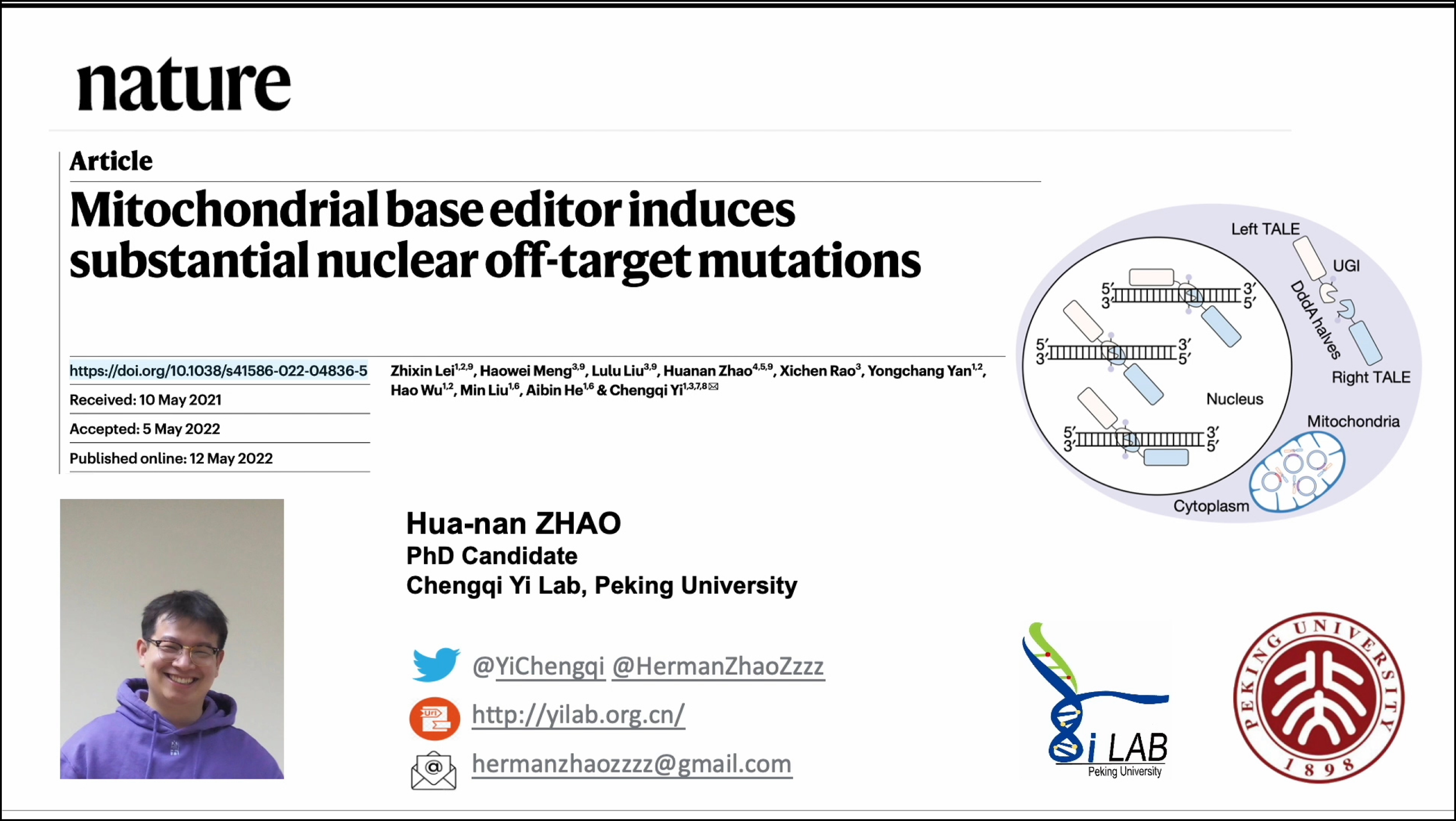Mitochondrial base editor induces substantial nuclear off-target mutations
Nature. 2022 Jun;606(7915):804-811. doi: 10.1038/s41586-022-04836-5. | PubMed
Zhixin Lei1,2, Haowei Meng3, Lulu Liu3, Huanan Zhao4,5, Xichen Rao3, Yongchang Yan1,2, Hao Wu1,2, Min Liu1,6, Aibin He1,6, Chengqi Yi7,8,9,10
- Peking-Tsinghua Center for Life Sciences, Peking University, Beijing, China.
- Academy for Advanced Interdisciplinary Studies, Peking University, Beijing, China.
- State Key Laboratory of Protein and Plant Gene Research, School of Life Sciences, Peking University, Beijing, China.
- School of Life Sciences, Tsinghua University, Beijing, China.
- Peking University-Tsinghua University-National Institute of Biological Sciences Joint Graduate Program, School of Life Sciences, Tsinghua University, Beijing, China.
- Beijing Key Laboratory of Cardiometabolic Molecular Medicine, Institute of Molecular Medicine, College of Future Technology, Peking University, Beijing, China.
- Peking-Tsinghua Center for Life Sciences, Peking University, Beijing, China. chengqi.yi@pku.edu.cn.
- State Key Laboratory of Protein and Plant Gene Research, School of Life Sciences, Peking University, Beijing, China. chengqi.yi@pku.edu.cn.
- Department of Chemical Biology and Synthetic and Functional Biomolecules Center, College of Chemistry and Molecular Engineering, Peking University, Beijing, China. chengqi.yi@pku.edu.cn.
- Peking University Genome Editing Research Center, Peking University, Beijing, China. chengqi.yi@pku.edu.cn.
Abstract
DddA-derived cytosine base editors (DdCBEs)-which are fusions of split DddA halves and transcription activator-like effector (TALE) array proteins from bacteria-enable targeted C•G-to-T•A conversions in mitochondrial DNA1. However, their genome-wide specificity is poorly understood. Here we show that the mitochondrial base editor induces extensive off-target editing in the nuclear genome. Genome-wide, unbiased analysis of its editome reveals hundreds of off-target sites that are TALE array sequence (TAS)-dependent or TAS-independent. TAS-dependent off-target sites in the nuclear DNA are often specified by only one of the two TALE repeats, challenging the principle that DdCBEs are guided by paired TALE proteins positioned in close proximity. TAS-independent off-target sites on nuclear DNA are frequently shared among DdCBEs with distinct TALE arrays. Notably, they co-localize strongly with binding sites for the transcription factor CTCF and are enriched in topologically associating domain boundaries. We engineered DdCBE to alleviate such off-target effects. Collectively, our results have implications for the use of DdCBEs in basic research and therapeutic applications, and suggest the need to thoroughly define and evaluate the off-target effects of base-editing tools.
Presented By Huanan Zhao | ORCID iD

